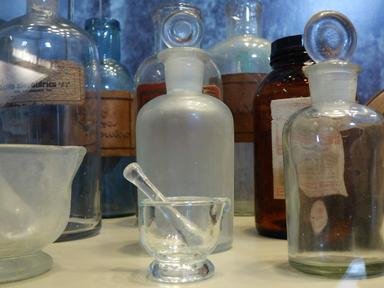Quiz Answer Key and Fun Facts
1. Some elements of the periodic table were named in honor of great scientists. Which of the following is an actual element, discovered in the twentieth century, as opposed to an impostor?
2. The suffix -on is used in the names of some elements, in particular the noble gases, but only one of the following names is that of a real element. Can you tell which one it is?
3. Certain chemical elements were named after countries or continents, but can you tell which of the following is a real element, as opposed to a fake?
4. The suffix -ium is used in the names of the vast majority of chemical elements, but only one of the following options is the name of a real element. Which one is it?
5. Some radioactive elements were named after planets of the solar system. Nevertheless, all but one of the following options are fakes. Please identify the genuine element.
6. A number of chemical elements have the suffix -ine in their names. Can you tell which of these is a real element, as opposed to something else?
7. Certain elements of the periodic table were named after gods of ancient mythology. Please pick the real element from the godly fakes.
8. Only one of the elements of the periodic table ends in -ony. Can you pick which one it is from these options?
9. Someone decided to name one of the elements of the periodic table after the third-largest US state. Can you identify that element?
10. Some chemical elements have almost unbelievable names. Which of these is a real element, as opposed to an outlandish fake?
Source: Author
Wizzid
This quiz was reviewed by FunTrivia editor
crisw before going online.
Any errors found in FunTrivia content are routinely corrected through our feedback system.

